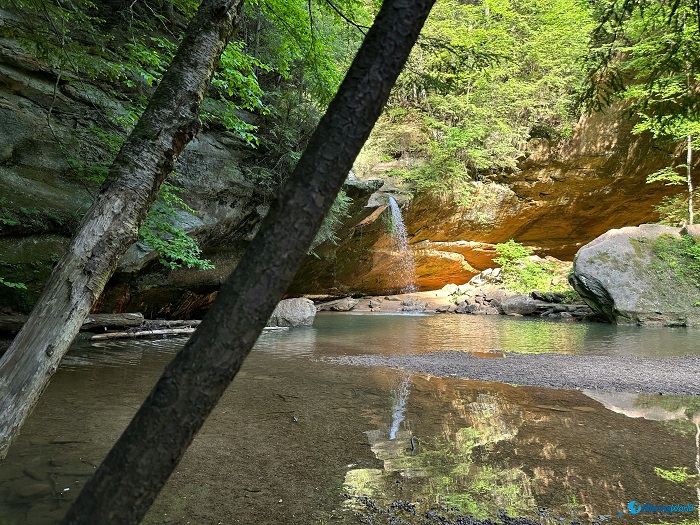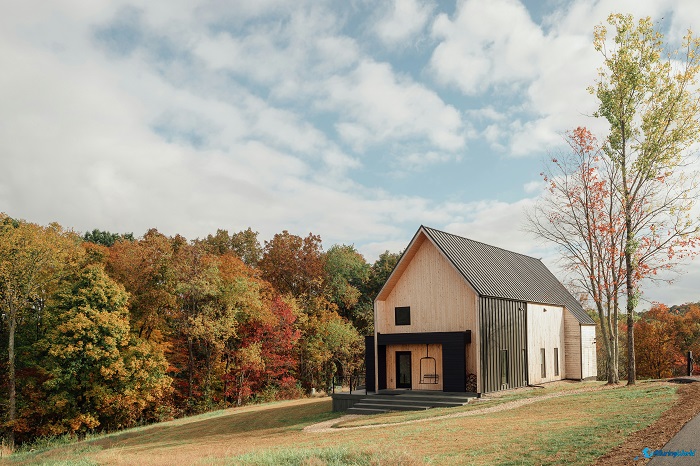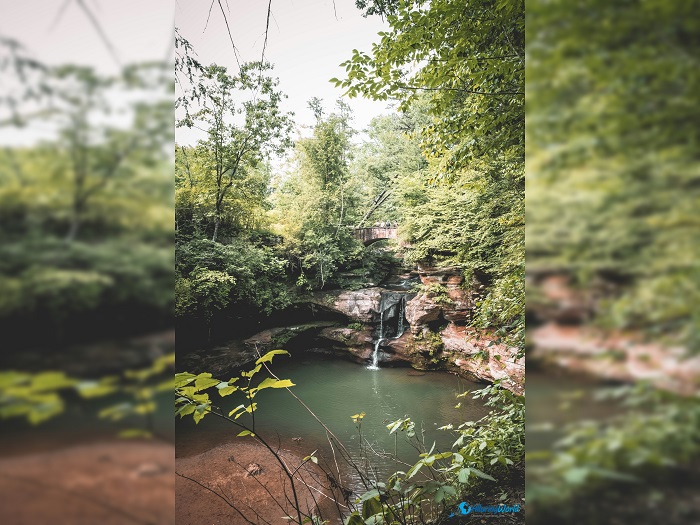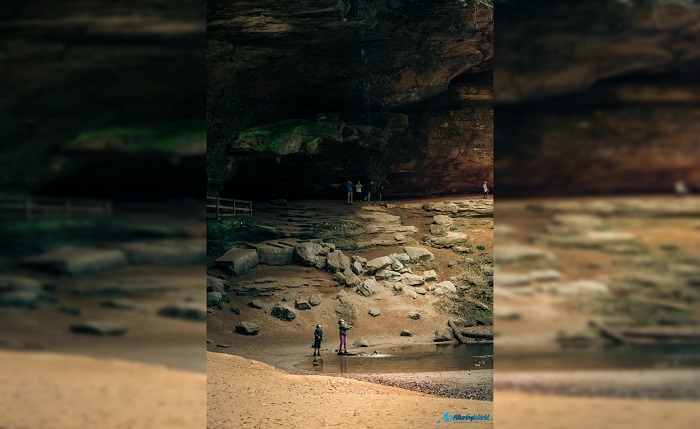Hocking Hills State Park is a picturesque state park located in the Hocking Hills Region, from where the name is derived, in Hocking County, the southeastern part of the State of Ohio, within the northeastern part of the United States of America. The park is considered to be one of the most picturesque and ecologically diverse destinations in the Midwest, and as it is nestled in the heart of the Appalachian foothills, it spans over 931 hectares (2,300 acres) of rugged terrain characterized by deep gorges, cascading waterfalls, towering cliffs, and lush forests. Situated approximately 80 km (50 mi) southeast of the city of Columbus, Hocking Hills State Park is a haven for nature enthusiasts, offering a wide range of outdoor activities, stunning landscapes, and a rich history that dates back thousands of years.
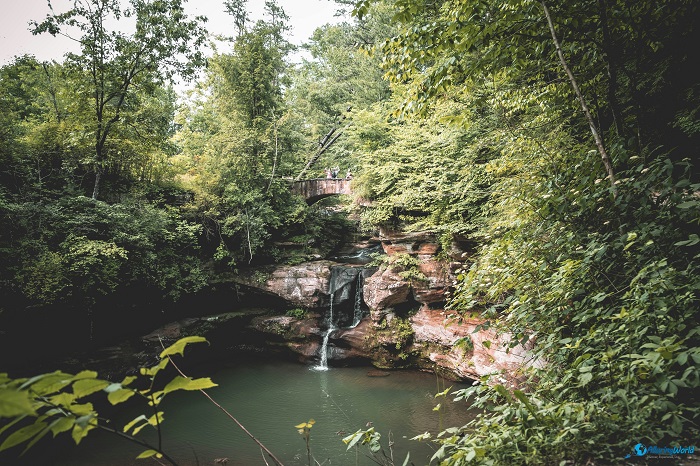
The formation of Hocking Hills’ unique landscape is a result of millions of years of geological activity. The main striking features of the park, such as its gorges and rock formations, were primarily shaped during the last Ice Age that occurred around 10,000 to 15,000 years ago, and the region’s distinctive sandstone, better known as Blackhand Sandstone, was deposited during the Pennsylvanian period, which occurred roughly 300 million years ago, when a shallow sea covered Ohio. Over time, erosion caused by water, wind, and glacial activity carved out the deep gorges, caves, and cliffs that make the park so visually stunning today, and this geological history has created a series of natural wonders within the park, including Old Man’s Cave, Ash Cave, Cedar Falls, and Rock House, each offering its own unique and breathtaking scenery.
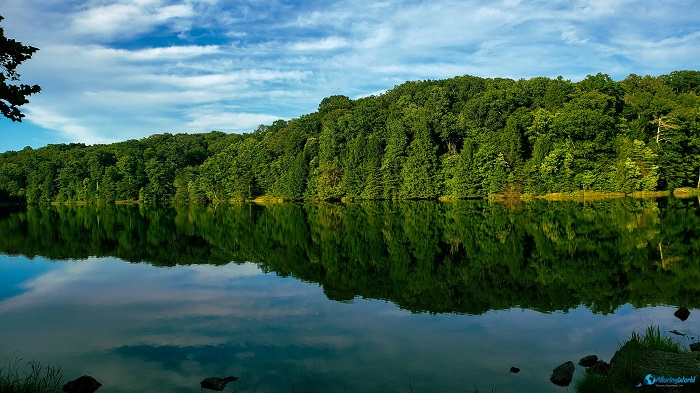
Hocking Hills State Park was officially established in the 1920s. Still, the area has been a place of significance for much longer, as Native American tribes, including the Shawnee, Delaware, and Wyandot, inhabited the region for thousands of years before European settlers arrived. These indigenous peoples were drawn to the area’s natural resources, and they were using the caves and rock shelters for protection and as sacred sites, which changed throughout the centuries. There is a plethora of evidence of their presence, including petroglyphs and artifacts that can still be found within the park. The origin of the name “Hocking” is considered to be derived from the Native American word “hockhocking,” which means “bottleneck” or “twisted,” and it likely refers to the Hocking River’s winding course through the hills.
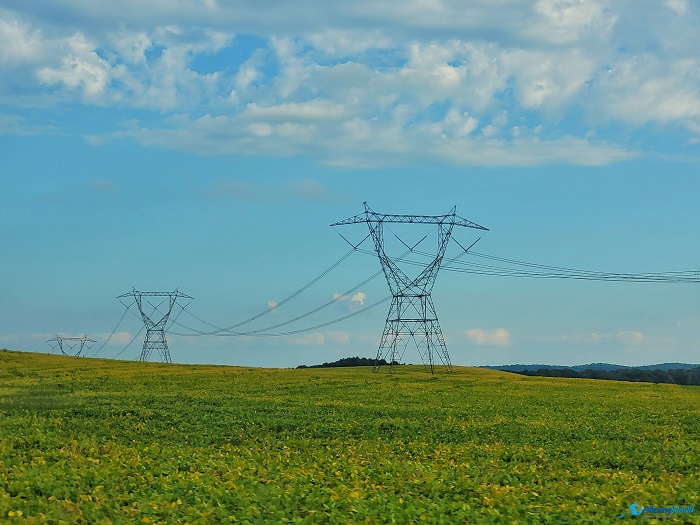
As European settlers moved into the area in the early 19th century, the natural beauty of Hocking Hills began to attract attention. The first land purchases for the creation of a state park were made in the early 1920s, aimed at preserving the area’s unique geological features and providing a space for public recreation. The Civilian Conservation Corps (CCC), which was a New Deal program that was established during the Great Depression, played a crucial role in developing the park’s infrastructure in the 1930s. Many of the trails were built by CCC, and this includes many of the bridges and shelters that visitors still use today, so their work helped lay the foundation for Hocking Hills to become one of Ohio’s most beloved state parks.
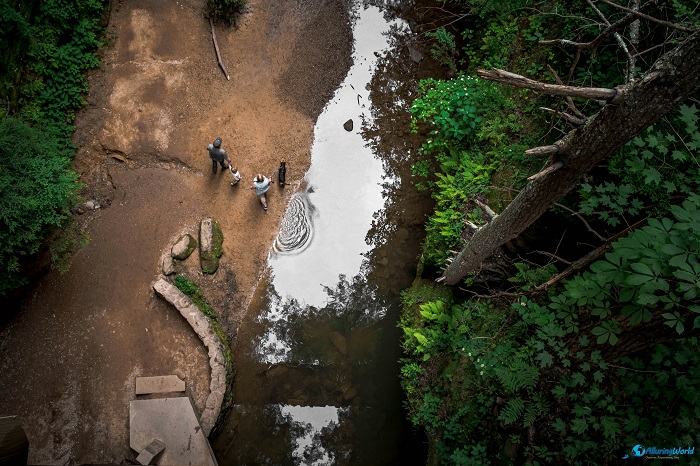
Today, Hocking Hills State Park is renowned for its stunning natural beauty and is one of Ohio’s most popular outdoor destinations, attracting nearly 4 million visitors annually. There are numerous activities for visitors of all ages and interests that the park offers, and these range from hiking and birdwatching to rock climbing and zip-lining. Still, one of the most popular activities in the park is exploring its extensive network of trails, and they range from easy walks to more challenging hikes. Each of the trails leads visitors through dense forests, past towering cliffs, and into deep gorges, offering spectacular views and the chance to see some of the park’s most iconic features.
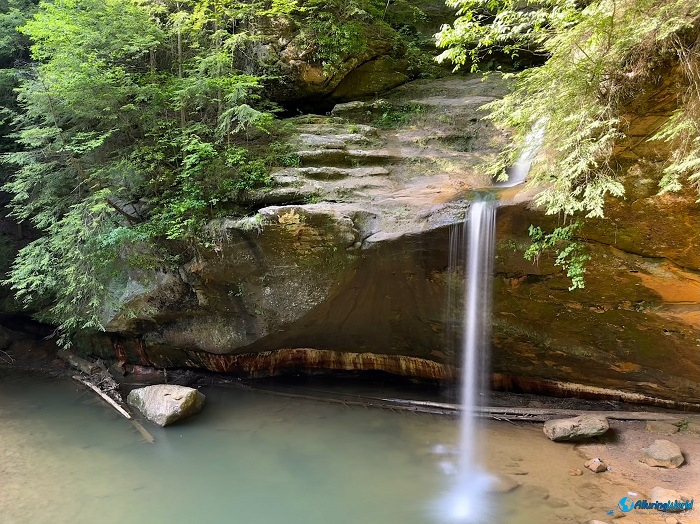
One of the most famous landmarks in Hocking Hills is Old Man’s Cave, known for its striking rock formations and scenic waterfalls. This cave, which is a large, recessed rock shelter, was named after Richard Rowe, a hermit who lived there in the early 1800s. This adventurous trail takes visitors on a journey through a series of gorges, past Upper and Lower Falls, and across picturesque stone bridges, making it one of the park’s must-see attractions. Another popular site is Ash Cave, the largest recess cave in Ohio, which features a stunning 27 m (90 ft) waterfall that cascades into a pool below, and in addition to that the area around Ash Cave is gorgeous in the spring when the wildflowers are in bloom, and in the winter when the waterfall freezes into an icy curtain.
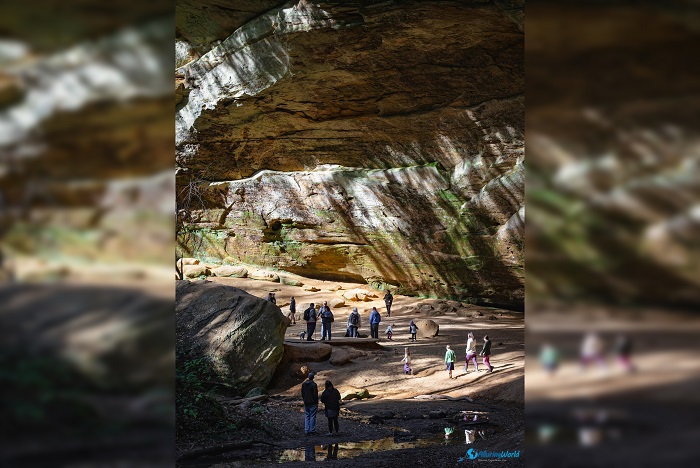
Another highlight of Hocking Hills is Cedar Falls, which is a powerful waterfall surrounded by massive boulders and towering hemlocks. The falls are a favorite spot for photographers, which are at their most impressive after heavy rains. For those looking for a bit of adventure, Rock House is a unique cave located midway up a 46 m (150 ft) cliff, which, unlike the other rock shelters in the park, is an actual cave with a ceiling and walls, and its high, narrow passageways give it a cathedral-like atmosphere. The park also features Cantwell Cliffs, a more remote and less crowded area known for its rugged beauty and challenging trails.
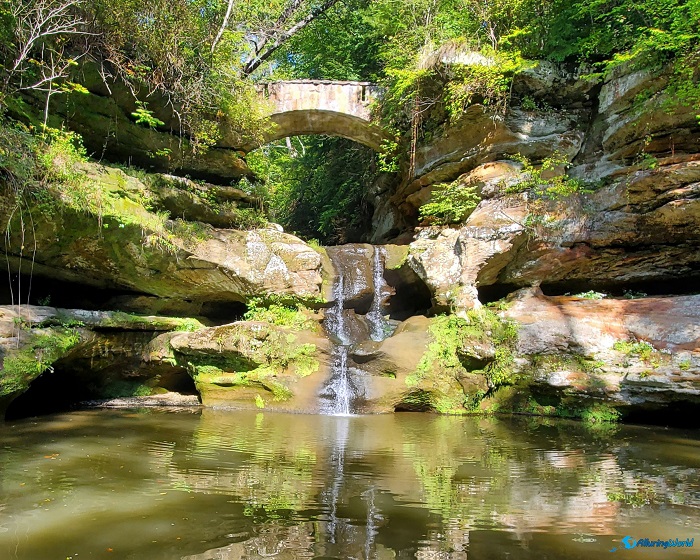
The best time to visit Hocking Hills State Park depends on what one wants to experience. Spring and fall are the most popular seasons, with mild weather and vibrant colors that make the park’s scenery even more spectacular, where spring brings an abundance of wildflowers. In contrast, fall is famous for its brilliant foliage, with the forests transforming into a sea of reds, oranges, and yellows. Summer is also a great time to visit, especially for families, as the warmer weather is perfect for swimming, picnicking, and enjoying the park’s many outdoor activities; nonetheless, winter, though quieter, offers its unique charm, with frozen waterfalls and snow-covered landscapes creating a serene and magical atmosphere.
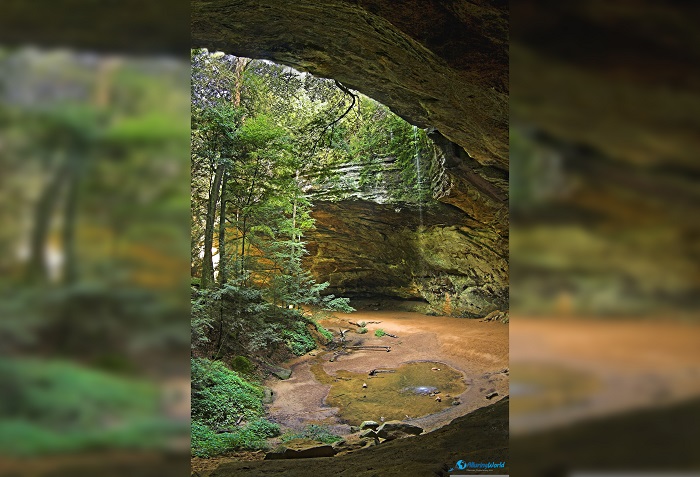
Hocking Hills State Park offers a variety of ways to enjoy the outdoors beyond hiking. For wildlife enthusiasts, the park would be the perfect haven, offering opportunities to see a diverse range of animals, including white-tailed deer, wild turkeys, and various bird species. Additionally, the park is a popular destination for rock climbing and rappelling, with several designated areas for these activities. For those seeking a more relaxed experience, the park’s picnic areas and campgrounds provide a perfect setting for spending time with family and friends. The Hocking Hills Canopy Tours offer a thrilling way to see the park from above, with zip lines and suspension bridges providing a bird’s-eye view of the forest.
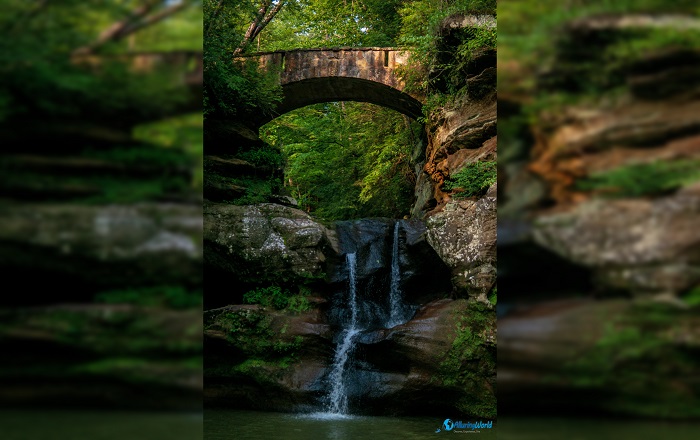
Reaching Hocking Hills State Park is relatively easy, as the park is situated just a short drive from major cities like Columbus, Cleveland, and Cincinnati. Most visitors arrive by car, with ample parking available at the park’s various trailheads and visitor centers. For those coming from farther away, Columbus is the nearest major airport, and rental cars are available for the drive to the park. Once at the park, the trails are well-marked and easy to navigate, with maps and information available at the visitor centers. As the park is open year-round, there is no entrance fee, making it an accessible and affordable destination for all.
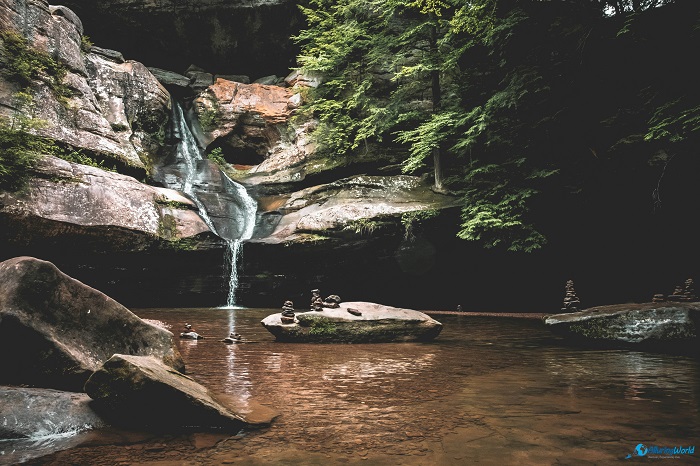
In conclusion, Hocking Hills State Park is a treasure trove of natural beauty and outdoor adventure, offering something for everyone to enjoy. The stunning landscapes, rich history, and diverse recreational opportunities make this park a must-visit destination for nature lovers, families, and anyone looking to escape into the tranquility of the great outdoors. Whether you’re hiking through the park’s scenic gorges, photographing its waterfalls, or simply enjoying a quiet moment in the forest, Hocking Hills promises an experience that is both awe-inspiring and unforgettable.
